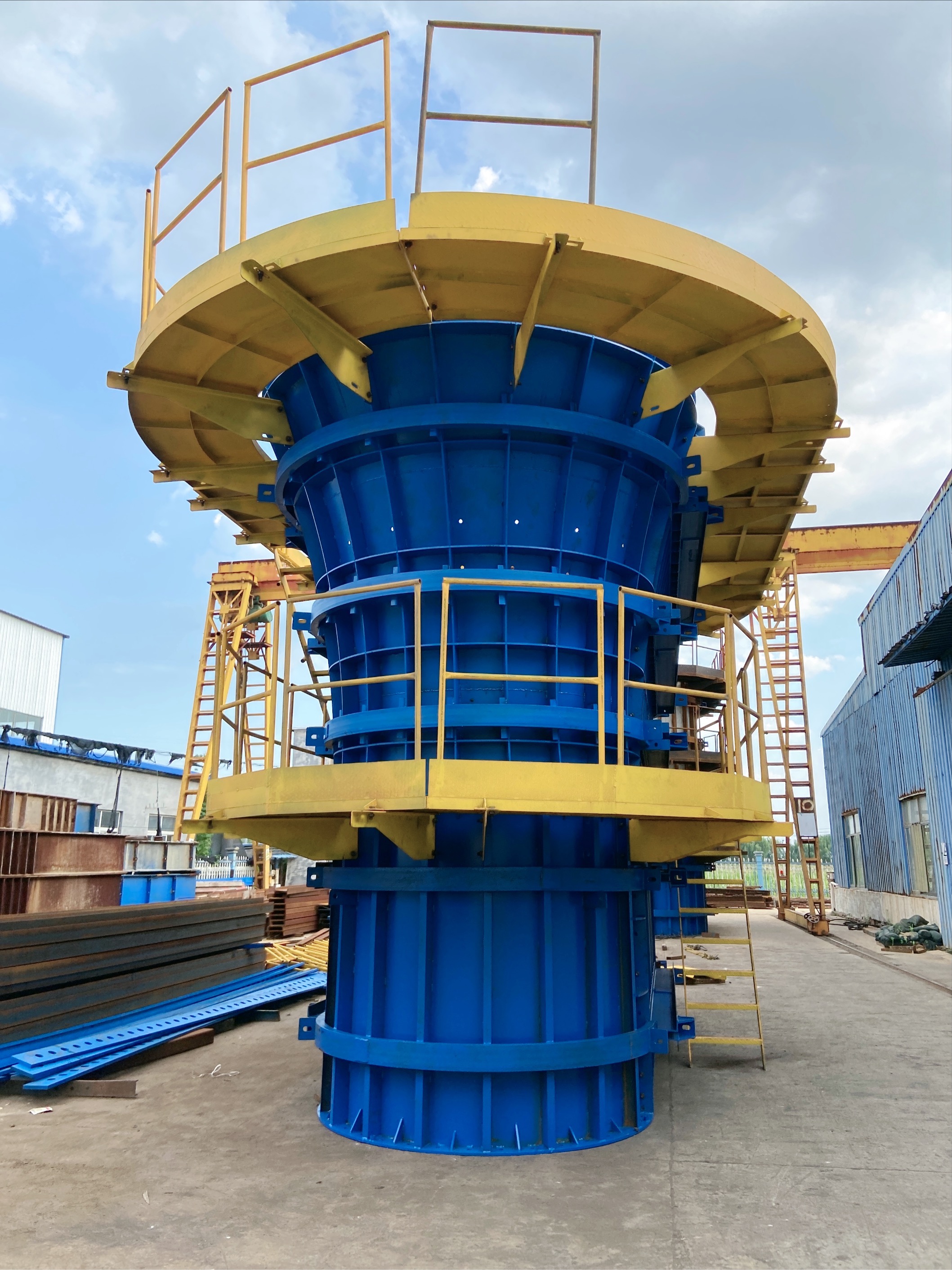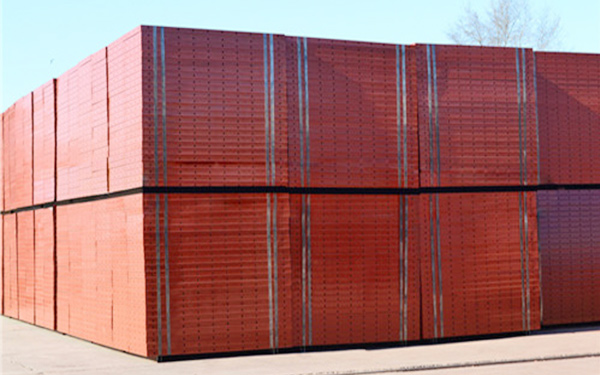Current position:
Home
News home
Industry News
Customization of Steel Template Specifications: What are the Common Types of Defects in Steel Templates?
Customization of Steel Template Specifications: What are the Common Types of Defects in Steel Templates?
source:Shandong Tianhong Heavy Industry Co., Ltd
Abstract:
Classification and Characteristics of Common Defects in Steel Formwork
1、 Inherent defects in materials
Cracks and delamination
There are micro/macro cracks on the surface or inside, which can easily cause stress concentration
Rolling defects in the sheet metal result in interlayer delamination and separation in the thickness direction
Inclusions and pores
Non metallic inclusions (oxides, sulfides) reduce the mechanical properties of materials
During the pouring process, gas retention forms holes with a diameter greater than 2mm, which need to be repaired
Surface oxidation and corrosion
Improper storage leads to thickening of the oxide layer (>50 μ m), which affects the welding quality
Pitting corrosion caused by peeling of galvanized layer, with a corrosion rate greater than 0.1mm/year, needs to be scrapped
2、 Processing and forming defects
Welding defects
Source of Defect Type Characteristics
There is a clear boundary between the unfused weld seam and the base metal interface
Residual welding slag inside the slag inclusion weld (size>1.5mm)
Insufficient melting depth at the edge of the biting base material leads to grooves (depth>0.5mm)
Dimensional deviation
Template length error>± 3mm/m, curvature>L/500
Difficulty in assembly due to bolt hole displacement greater than 1.5mm
Molding defects
Edge wave deformation during roll forming (wave amplitude>2mm/300mm)
Bending angle error>± 1 °, affecting structural assembly accuracy
3、 Construction application defects
Structural defects
Overall collapse caused by instability of the support system (verticality deviation>5mm/m)
The positioning error of embedded parts is greater than 3mm, resulting in subsequent connection failure
Interface defects
Template joint leakage forms honeycomb and rough surface (porosity>5%)
Surface damage of formwork caused by concrete adhesion (peeling depth>0.5mm)
Deformation defect
Localized bulging: buckling deformation in the compressed area (wavelength/amplitude ratio<30:1)
Overall warping: Non uniform deformation caused by temperature difference stress (flatness>5mm/2m)
4、 Special environmental defects
Low-temperature embrittlement
-When working below 20 ℃, the impact toughness decreases by more than 30%
Fatigue damage
Microcracks appear after repeated use for more than 50 times (crack propagation rate>10 ⁻⁶ mm/time)
Key Quality Control Points
Acceptance criteria for defect type detection methods
Weld quality ultrasonic flaw detection defect equivalent diameter ≤φ 2mm
Flatness laser scanner ≤ 2mm/m
Joint gap plug gauge detection ≤ 1.5mm
Surface roughness comparison block method Ra ≤ 12.5 μ m
Cracks and delamination
There are micro/macro cracks on the surface or inside, which can easily cause stress concentration
Rolling defects in the sheet metal result in interlayer delamination and separation in the thickness direction
Inclusions and pores
Non metallic inclusions (oxides, sulfides) reduce the mechanical properties of materials
During the pouring process, gas retention forms holes with a diameter greater than 2mm, which need to be repaired
Surface oxidation and corrosion
Improper storage leads to thickening of the oxide layer (>50 μ m), which affects the welding quality
Pitting corrosion caused by peeling of galvanized layer, with a corrosion rate greater than 0.1mm/year, needs to be scrapped
2、 Processing and forming defects
Welding defects
Source of Defect Type Characteristics
There is a clear boundary between the unfused weld seam and the base metal interface
Residual welding slag inside the slag inclusion weld (size>1.5mm)
Insufficient melting depth at the edge of the biting base material leads to grooves (depth>0.5mm)
Dimensional deviation
Template length error>± 3mm/m, curvature>L/500
Difficulty in assembly due to bolt hole displacement greater than 1.5mm
Molding defects
Edge wave deformation during roll forming (wave amplitude>2mm/300mm)
Bending angle error>± 1 °, affecting structural assembly accuracy
3、 Construction application defects
Structural defects
Overall collapse caused by instability of the support system (verticality deviation>5mm/m)
The positioning error of embedded parts is greater than 3mm, resulting in subsequent connection failure
Interface defects
Template joint leakage forms honeycomb and rough surface (porosity>5%)
Surface damage of formwork caused by concrete adhesion (peeling depth>0.5mm)
Deformation defect
Localized bulging: buckling deformation in the compressed area (wavelength/amplitude ratio<30:1)
Overall warping: Non uniform deformation caused by temperature difference stress (flatness>5mm/2m)
4、 Special environmental defects
Low-temperature embrittlement
-When working below 20 ℃, the impact toughness decreases by more than 30%
Fatigue damage
Microcracks appear after repeated use for more than 50 times (crack propagation rate>10 ⁻⁶ mm/time)
Key Quality Control Points
Acceptance criteria for defect type detection methods
Weld quality ultrasonic flaw detection defect equivalent diameter ≤φ 2mm
Flatness laser scanner ≤ 2mm/m
Joint gap plug gauge detection ≤ 1.5mm
Surface roughness comparison block method Ra ≤ 12.5 μ m
Previous post:
Steel template manufacturers supply for rent: How to deal with steel template size accuracy that is not up to standard? 双语对照 笔记
Next chapter:
None
Disclaimer: The content provided on this website is for reference only (some information is sourced from the internet). The publication of content information is for the purpose of transmission and does not represent the views of this website. If the content involves copyright issues, please contact the website editor in a timely manner, and we will take appropriate measures to avoid unnecessary losses for both parties.
Related article
- Rental of construction steel formwork: How to choose suitable steel formwork materials?
- Rental price of steel formwork: Analysis of key points for concrete construction of bridge special-shaped column formwork
- Customization of steel formwork specifications: What are the installation steps for steel formwork? 双语对照 笔记
- Nearby steel formwork rental station: How to deal with and prevent honeycomb and pockmarks on steel formwork?
- Steel template manufacturers, wholesalers, and suppliers: What should be done if there are scratches on the surface of the template?
- Customized specifications for steel formwork: What factors need to be considered in calculating the weight of steel formwork?
- Nearby steel formwork manufacturers: What is the maintenance cycle for stainless steel formwork?
- Template manufacturer: What are the specific risks of grout leakage to construction safety?
- Pulling out Mountains and Rivers for Win Win - Jining Tianli Employees Celebrate National Day Holiday with Tug of War Competition
- Customized manufacturer of composite steel formwork: How to prevent and deal with steel formwork that is not allowed to be reserved or embedded?
- Pulling out Mountains and Rivers for Win Win - Jining Tianli Employees Celebrate National Day Holiday with Tug of War Competition
- Customized processing of bridge steel formwork: how to prevent and deal with unstable formwork support?
Hot article

- T梁模版
- Pulling out Mountains and Rivers for Win Win - Jining Tianli Employees Celebrate National Day Holiday with Tug of War Competition
- 力“拔”山兮,“河”作共赢——济宁天力员工欢度国庆假期之拔河比赛
- Pulling out Mountains and Rivers for Win Win - Jining Tianli Employees Celebrate National Day Holiday with Tug of War Competition
- Pulling out Mountains and Rivers for Win Win - Jining Tianli Employees Celebrate National Day Holiday with Tug of War Competition
- Pulling out Mountains and Rivers for Win Win - Jining Tianli Employees Celebrate National Day Holiday with Tug of War Competition
- Pulling out Mountains and Rivers for Win Win - Jining Tianli Employees Celebrate National Day Holiday with Tug of War Competition
Recommended article

Customized rental of construction steel formwork: How to prevent and deal with loose joints in steel formwork?

Customized rental of steel formwork: What are the dimensions, specifications, and models of steel formwork?
- Customized rental of construction steel formwork: How to prevent and deal with loose joints in steel formwork?
- Customized rental of steel formwork: What are the dimensions, specifications, and models of steel formwork?
- Steel formwork manufacturer supply specifications: What are the applicable fields for steel formwork
- 力“拔”山兮,“河”作共赢——济宁天力员工欢度国庆假期之拔河比赛
- Pulling out Mountains and Rivers for Win Win - Jining Tianli Employees Celebrate National Day Holiday with Tug of War Competition
- Pulling out Mountains and Rivers for Win Win - Jining Tianli Employees Celebrate National Day Holiday with Tug of War Competition
- Pulling out Mountains and Rivers for Win Win - Jining Tianli Employees Celebrate National Day Holiday with Tug of War Competition
- Pulling out Mountains and Rivers for Win Win - Jining Tianli Employees Celebrate National Day Holiday with Tug of War Competition



